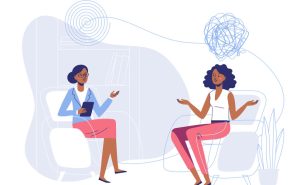What Does Lumbar Lordosis Do to Your Back?


Do you know that over 6 million people in the United States suffer from lumbar lordosis? It’s a condition that affects your lower back, causing an excessive inward curve. This can lead to pain, discomfort, and limited mobility.
In this article, we will explore what lumbar lordosis does to your back, including its causes, symptoms, diagnosis, and treatment options. So, if you’re curious about how this condition impacts your daily life, keep reading for all the answers you need. In this article, we are going to find the most asked question, What is Lumbar Lordosis?
Table of Contents
Understanding Lumbar Lordosis
Lumbar lordosis is a condition that causes an excessive inward curvature of your lower back. When dealing with lumbar lordosis, it’s important to focus on posture correction. Maintaining good posture helps alleviate the strain on your lower back and promotes proper alignment.
You can do specific exercises to strengthen the muscles in your abdomen and back, which can improve lumbar lordosis. Additionally, practicing regular stretching routines can help relieve tension in your lower back.
Prevention tips include avoiding prolonged sitting or standing in one position and using proper ergonomics when sitting at a desk or working on a computer. Lumbar lordosis can impact daily activities such as walking, bending, and lifting objects.
Causes of Lumbar Lordosis
Tight hip flexor muscles commonly cause excessive curvature in your lower spine. When these muscles become tight, they can pull on your pelvis and increase the curvature of your lower back, leading to lumbar lordosis.
Here are three factors that can contribute to the development of this condition:
- Postural habits: Poor posture, such as sitting or standing with a slouched or arched back, can put extra strain on your lower back and contribute to muscular imbalances.
- Obesity correlation: Excess weight puts additional stress on the spine and can lead to an increased curvature in the lower back.
- Pregnancy-related factors: During pregnancy, hormonal changes and weight gain can alter the positioning of the pelvis and increase the curvature of the lower spine temporarily.
These factors, along with genetic predisposition, can all play a role in causing lumbar lordosis. It’s important to address these causes and work towards improving posture and strengthening the muscles surrounding your hips and core to alleviate excessive curvature in your lower spine.
Symptoms and Effects of Lumbar Lordosis
To alleviate the symptoms and effects of lumbar lordosis, it’s important for you to focus on improving your posture and strengthening the muscles surrounding your hips and core.
Lumbar lordosis can have long-term consequences if left untreated. It can lead to chronic back pain, anddecreased mobility, and even affect your ability to perform daily activities like walking or bending.
Physical therapy exercises such as stretching, strengthening, and postural correction can help reduce pain and improve muscle balance in your back.
Lifestyle modifications like maintaining a healthy weight, avoiding prolonged sitting or standing, and using proper body mechanics can also provide relief.
Prevention strategies include practicing good posture habits throughout the day, incorporating regular exercise into your routine, and using ergonomic tools to support your spine.
Diagnosing Lumbar Lordosis
When diagnosing lumbar lordosis, a healthcare provider will typically perform a physical examination and assess the curvature of your lower spine. Here are three key steps they may take to diagnose this condition:
- Identifying lordotic posture: Your healthcare provider will observe your standing posture to see if you have an excessive inward curve in your lower back, which is characteristic of lumbar lordosis.
- Evaluating lumbar spine curvature: They will use their hands to feel the alignment of your vertebrae and assess the degree of curvature in your lower spine.
- Assessing pelvic tilt: Your provider may also examine the alignment and position of your pelvis, as abnormalities in pelvic tilt can contribute to lumbar lordosis.
In some cases, imaging techniques such as X-rays or MRIs may be used to measure the angle of lumbar lordosis more accurately and confirm the diagnosis.
Treatment Options for Lumbar Lordosis
There are several treatment options available for managing lumbar lordosis. These include physical therapy, pain medication, and in some cases, surgery. Non-surgical interventions play a crucial role in the management of this condition.
Physical therapy exercises can help strengthen the muscles surrounding your spine and improve flexibility. These exercises may include stretching, strengthening exercises, and core stabilization techniques. Posture correction techniques are also important to correct any imbalances that may be contributing to your lordosis.
Pain management strategies such as hot/cold therapy or over-the-counter pain medications can provide temporary relief from discomfort. However, if non-surgical methods fail to alleviate your symptoms or if your condition is severe, surgical procedures like spinal fusion or laminectomy may be recommended by your healthcare professional.
Conclusion
So there you have it, my friend. Lumbar lordosis may cause a bit of trouble for your back, but fear not! It’s just a gentle reminder to take care of yourself and listen to what your body needs.
With proper diagnosis and treatment options, you can ease the discomfort and return to feeling like your best self.
Embrace this opportunity for growth and self-care, and let lumbar lordosis guide you toward a healthier spine and a happier life.






